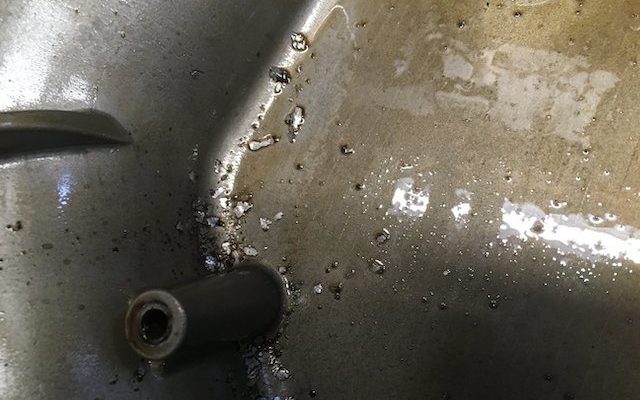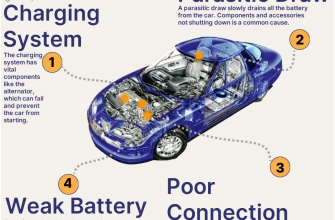Metal shavings contamination in lubricating oil is a critical issue that can significantly impact the performance and lifespan of machinery. Understanding the causes, effects, and preventive measures for this contamination is essential for anyone involved in maintenance and operations across various industries. This article delves into the nature of metal shavings contamination, its implications, and strategies to mitigate its occurrence.
- The Nature of Metal Shavings Contamination
- Implications of Contamination
- Detecting Metal Shavings Contamination
- Preventive Measures
- Mitigating Risks Through Best Practices
- Technological Advances in Monitoring
- The Bottom Line: Proactive Measures Lead to Longevity
- Understanding the Risks and Solutions
- Importance of Predictive Maintenance
- Innovative Lubrication Solutions
- Training and Knowledge Sharing
- Environmental Considerations
- Looking Ahead: Trends in Oil Contamination Management
The Nature of Metal Shavings Contamination
Metal shavings, or swarf, are small fragments of metal that are produced during machining processes, wear, or other mechanical operations. These tiny, often sharp particles can find their way into lubricating oil systems, leading to serious issues. The contamination can stem from several sources, including:
- Machining Operations: During processes such as milling, turning, or grinding, metal shavings can be generated and inadvertently introduced into the lubricating oil.
- Component Wear: Continuous friction between moving parts can cause wear, resulting in the release of metal particles into the lubricant.
- Inadequate Filtration: Poor filtration systems may fail to catch all contaminants, allowing metal shavings to mix with the oil.
Implications of Contamination
The presence of metal shavings in lubricating oil can lead to various detrimental effects, including:
- Increased Wear: Metal particles can act as abrasives, causing excessive wear on engine components, gears, and bearings.
- Reduced Lubrication Efficiency: The contamination can hinder the oil’s ability to lubricate effectively, leading to overheating and potential failure of machinery.
- Decreased Oil Longevity: Contaminated oil may degrade more quickly, necessitating more frequent oil changes and increasing maintenance costs.
Detecting Metal Shavings Contamination
Early detection of metal shavings in lubricating oil is crucial for preventing damage. Various methods can be employed to identify contamination:
- Visual Inspection: Regularly checking the oil for visible particles or discoloration can provide immediate insight into contamination levels.
- Magnetic Inspection: Using magnets can help attract ferrous particles, allowing for easy removal and analysis of contaminants.
- Oil Analysis: Laboratory testing can reveal the presence and concentration of metal particles, providing a comprehensive understanding of oil condition.
Preventive Measures
Implementing preventive measures is key to minimizing metal shavings contamination in lubricating oil:
- Regular Maintenance: Routine inspections and maintenance of machinery can help identify wear and tear before it leads to contamination.
- Effective Filtration Systems: Utilizing high-quality filtration systems can capture metal particles before they enter the oil system.
- Monitoring Oil Condition: Regularly checking and analyzing the lubricating oil can help detect contamination early and allow for timely intervention.
Metal shavings contamination in lubricating oil poses significant risks to machinery performance and longevity. By understanding the sources and implications of this contamination and implementing effective detection and prevention strategies, industries can protect their equipment, reduce maintenance costs, and ensure operational efficiency. Prioritizing the cleanliness of lubricating oil is not just a best practice; it’s a fundamental aspect of effective machinery management.
Mitigating Risks Through Best Practices
To effectively combat metal shavings contamination, industries must adopt a multi-faceted approach. Here are some best practices that can significantly reduce the risk of contamination in lubricating oil systems:
- Implementing Advanced Filtration Systems: Investing in high-performance filtration solutions, such as magnetic filters and centrifugal separators, can dramatically reduce the influx of metal shavings into the oil; These systems can capture even the smallest particles, ensuring that only clean oil circulates through machinery.
- Regular Training and Awareness Programs: Educating personnel on the importance of cleanliness in lubrication systems is essential. Training staff to recognize potential sources of contamination and how to rectify them can foster a culture of maintenance and vigilance.
- Scheduled Oil Analysis: Establishing a routine oil analysis program can help identify contamination trends over time. By analyzing wear metals and other contaminants, maintenance teams can pinpoint issues before they escalate into severe problems.
- Optimizing Operational Procedures: Reviewing and optimizing machining and operational procedures can minimize the generation of metal shavings. Techniques such as using lubricant during machining can help reduce friction and wear, thereby decreasing the production of shavings.
Technological Advances in Monitoring
The advent of technology has significantly enhanced the capability to monitor and manage lubricating oil conditions. Some cutting-edge tools include:
- IoT Sensors: Internet of Things (IoT) technology allows for real-time monitoring of oil conditions. Sensors can detect changes in viscosity, temperature, and contamination levels, sending alerts to operators for immediate action.
- Machine Learning Algorithms: By analyzing historical data, machine learning algorithms can predict the likelihood of contamination events, enabling proactive maintenance scheduling and resource allocation.
- Automated Oil Change Systems: These systems not only automate the oil change process but also filter and purify the oil before it re-enters the system, reducing the chances of metal shavings contamination.
The Bottom Line: Proactive Measures Lead to Longevity
As industries continue to evolve, the importance of maintaining clean lubricating oil systems will only grow. A commitment to excellence in this area will undoubtedly yield substantial returns, safeguarding machinery and ensuring seamless operations for years to come.
Understanding the Risks and Solutions
In an era where precision engineering dominates the landscape, the risks associated with metal shavings contamination in lubricating oil cannot be overstated. The repercussions of this contamination extend beyond simple wear and tear; they can lead to catastrophic machinery failures that disrupt operations and inflate costs. As industries increasingly rely on advanced machinery, recognizing the subtle signs of contamination becomes paramount.
Importance of Predictive Maintenance
One of the most effective strategies to combat metal shavings contamination is the implementation of predictive maintenance practices. This proactive approach involves using data analytics and machine learning to predict when equipment might fail due to excessive wear or contamination. By analyzing historical data and real-time monitoring, companies can schedule maintenance precisely when needed, rather than adhering to a rigid timeline. This not only reduces downtime but also ensures that machinery operates at optimal efficiency.
Innovative Lubrication Solutions
Employing advanced lubrication solutions can also play a critical role in minimizing metal shavings contamination. Synthetic lubricants, for instance, offer superior protective qualities compared to conventional oils. Their formulation allows for better resistance to thermal breakdown and oxidation, thus prolonging the lifespan of both the lubricant and the machinery. Furthermore, these advanced lubricants can be engineered to contain additives that attract and trap metal particles, reducing the risk of damage.
Training and Knowledge Sharing
While technology plays a significant role in addressing contamination issues, human factors cannot be overlooked. Training staff on best practices for lubrication management and contamination prevention is vital. Organizations should foster environments where knowledge sharing is encouraged, allowing teams to learn from each other’s experiences. Regular workshops and training sessions can instill a culture of vigilance and responsibility, ensuring that everyone understands their role in maintaining equipment integrity.
Environmental Considerations
As industries become more aware of their environmental impact, the issue of metal shavings contamination also intersects with sustainability concerns. Proper disposal and recycling of contaminated lubricating oil and metal shavings are crucial. Companies are now implementing environmentally friendly practices to manage waste responsibly. By adopting closed-loop systems, organizations can recycle lubricants and reduce waste, contributing to a more sustainable future.
Looking Ahead: Trends in Oil Contamination Management
The future of lubricating oil management is likely to see significant advancements driven by technology and sustainability. Innovations such as smart filters equipped with sensors that provide real-time data on oil condition are on the horizon. These smart systems can alert operators to potential contamination before it becomes a significant issue, allowing for immediate corrective actions.
Moreover, as industries continue to prioritize sustainability, the demand for biodegradable lubricants is likely to rise. These environmentally friendly alternatives not only reduce the ecological footprint but also mitigate the risks associated with traditional oil contamination. As research and development in this sector advance, we can expect to see more options that meet both performance and environmental standards.
Metal shavings contamination in lubricating oil is a multifaceted issue that requires a concerted effort from various stakeholders within an organization. By embracing advanced technologies, instituting rigorous maintenance protocols, and fostering a culture of knowledge and responsibility among staff, businesses can significantly reduce the risks associated with this contamination. Ultimately, the goal is to create a cleaner, safer, and more efficient operational environment—one where machinery can thrive without the looming threat of contamination.
As industries evolve, staying ahead of these challenges will not only ensure operational success but also contribute to a sustainable future. In the journey toward enhanced machinery management, vigilance, innovation, and education will be the cornerstones of progress.










This article provides a comprehensive overview of metal shavings contamination. Very informative and essential for maintenance professionals!
I appreciate how well this article breaks down complex issues into understandable points. Very well written!
Fantastic article! It’s amazing how something as small as metal shavings can have such a big impact on machinery longevity.
Great read! The preventive measures suggested are practical and actionable. Definitely going to implement them in our operations.
I found the section on implications particularly enlightening. Understanding the risks really highlights the importance of proper maintenance.
This article is a must-read for anyone involved in machinery maintenance. It clearly explains how metal shavings can affect performance.
The detection methods mentioned are quite helpful. I never realized how crucial early detection could be until now.
The insights on inadequate filtration were eye-opening! I’ll be reviewing our systems based on what I learned here.